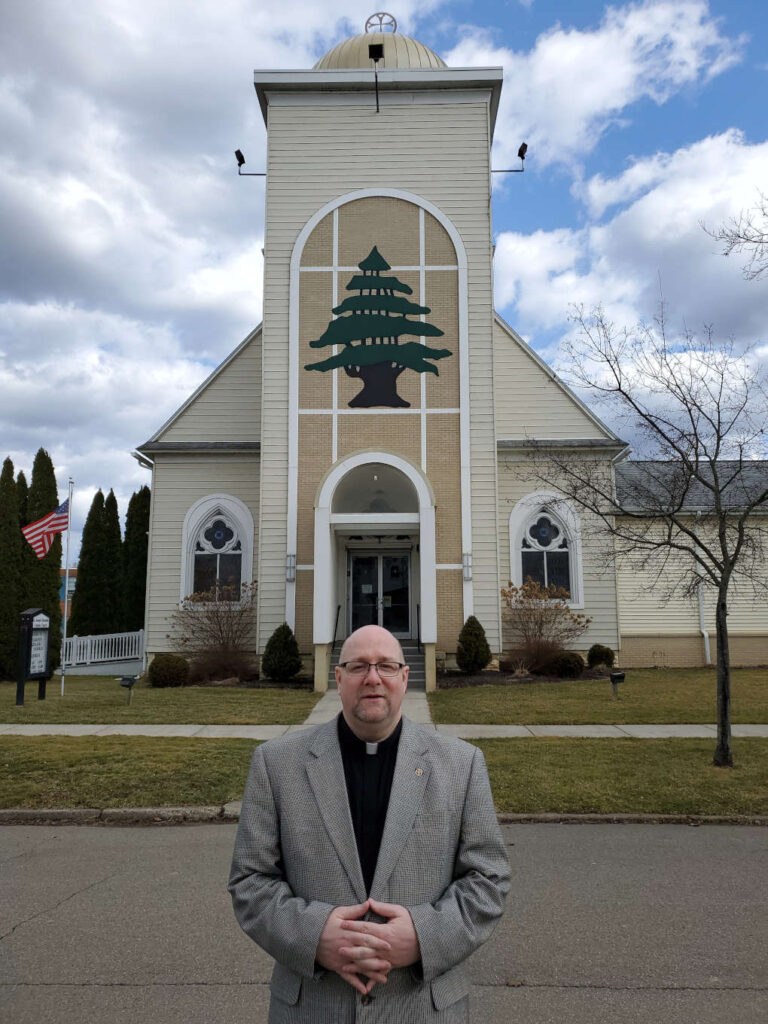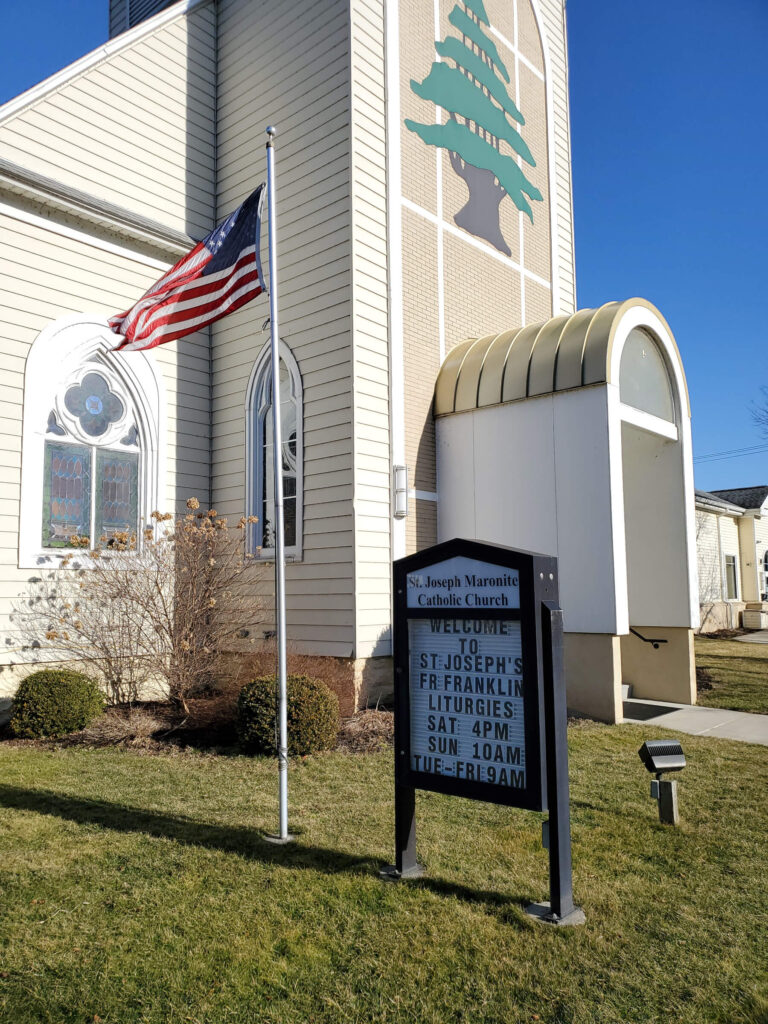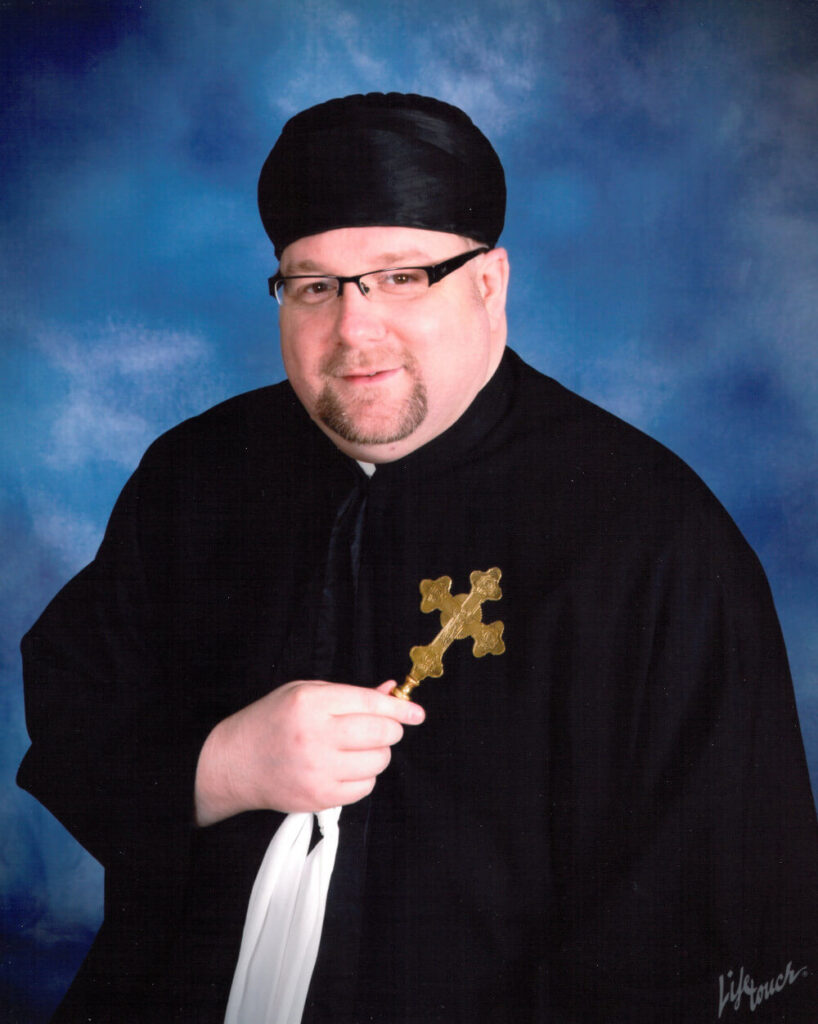about us
What is the Maronite Faith?
The Maronite Catholic Church is a rich and vibrant Christian community with roots dating back to the early Church in Antioch. Our faith is centered on love and devotion to Jesus Christ and is expressed through beautiful liturgical celebrations, a deep sense of community, and a commitment to social justice and service to those in need.
Maronite Catholicism holds a number of unique beliefs and practices that set it apart from other Christian traditions. For example, we place a strong emphasis on Mary, the mother of Jesus, and honor her as the model of all Christians. Our liturgical traditions are rooted in the rich musical and liturgical heritage of the East, and our worship is marked by vibrant, participatory celebrations that bring the whole community together.
At the heart of Maronite Catholicism is a focus on personal growth and spiritual development, inspired by the lives and teachings of our saints and mystics. Through prayer, study, and community life, we seek to deepen our relationship with God and to grow in our faith, becoming more loving, compassionate, and committed to serving others. We welcome all to join us on this spiritual journey, and to experience the beauty and richness of the Maronite Catholic Church.


Who Are We at Saint Joseph's?
Saint Joseph’s Maronite Church in Olean, NY is a vibrant and welcoming community of faith that is proud to carry on the rich traditions of the Maronite Catholic Church. Our church is a place where people of all ages and backgrounds come together to worship, pray, and build meaningful relationships with one another.
At Saint Joseph’s, we believe that worship is an opportunity to encounter God and to deepen our relationship with him. Our liturgical celebrations are rich, participatory experiences that bring the whole community together, and our musical heritage is a source of pride and inspiration for us all. Whether you are a lifelong Maronite Catholic or just curious to learn more, you will find a warm and welcoming community at Saint Joseph’s.
In addition to our liturgical life, we offer many opportunities for spiritual growth and service, including educational programs, volunteer opportunities, and social events. Whether you are looking to deepen your faith, meet new people, or simply enjoy the beauty and richness of our traditions, you will find what you are looking for at Saint Joseph’s Maronite Church in Olean, NY.
Who is Father Claude Franklin?
Father Claude was born on February 12, 1972, in Fayetteville, NC. He spent his first 19 years being raised and educated in Fayetteville, until he entered Our Lady of Lebanon Maronite Seminary in Washington, DC. He received both his Bachelor of Arts in Philosophy on May 7, 1994 and his Master of Arts in Theology on May 10, 1997 from Oblate College. He was ordained to the Priesthood on November 29, 1997, and spent his first eight months of his priesthood in Lebanon studying Arabic.
Father Claude’s first assignment was at St. Ann Maronite Church in Scranton, PA in 1998 until he was sent to study in Rome in 2003 at the Pontifical Oriental Institute and resided at the Patriarchal Maronite College. He received his Licentiate in Liturgical Studies (“Summa Cum Laude”) on June 20, 2005.
Upon returning from Rome in May 2006 he was Parochial Vicar of Our Lady of Victory Maronite Church in Carnegie, PA. He was then assigned as Pastor of St. Elias Maronite Church in Roanoke, VA. Father was assigned as Pastor to St. John the Baptist Maronite Church in New Castle, PA in August 2010 until October 2020.
Fr. Claude was assigned as Pastor of St. Joseph Maronite Church in Olean, NY on October 1, 2020, to the present. In addition to his pastoral duties, Father Claude is also working on his Doctorate in Liturgical Studies from the Pontifical Oriental Institute.

History of the St. Joseph's Maronite Catholic Church
The Universal Catholic Communion worldwide is made up of 21 self-governing Churches which stem from five basic Traditions of origin: Roman (the largest group); Byzantine-Greek (Constantinople and the Slavic and Russian traditions), Syrian (Syriac-speaking Churches of Antioch and the ancient “Church of the East” in Edessa and Mesopotamia, and the Thomas Christians of India); Coptic (ancient Alexandria in Egypt and Ethiopia) and Armenian. These Churches, while having diverse, particular origins, are in communion with each other under the universal leadership of the Bishop of Rome, also known as the Pope of Rome.
The Maronite Catholic Church has its origins in the great ancient city of Antioch within the Syrian province of the Roman Empire, once situated on the eastern shore of the Mediterranean Sea, and whose ruins lie in present-day Syria. Its immediate origin within Syria can be traced to the 4th/5th-century hermit and monk known as Maron, an attested Christian confessor, priest and physical and spiritual healer. After his death in about 410 A.D., a great monastery was founded in his name. It is this community of men and women religious (monks and nuns) from which the Maronite Church developed. They spoke and worshiped in the Syriac language (a dialect of the western, Palestinian Aramaic that Jesus spoke) and which is also still used today in Maronite worship.
Maronite Catholic Christians claim, along with the Greek-Byzantine Italo-Albanian Catholic Church, never to have separated from communion with the Church of Rome, when the other Eastern Churches had split from communion and gone into Orthodoxy for a time, but subsequently some of whom returned to communion to form the other nineteen Eastern Catholic Churches recognized in today’s Universal Catholic Communion of Churches.
St. Joseph Maronite Catholic Church in Olean had its origins in the immigration of ethnic Syrians (mostly Maronites and Greek-Byzantine Melkites) who fled the persecution of Christians by Ottoman Turks in the 19th and early 20th centuries. (Recall that the Republic of Lebanon gained its independence from Greater Syria only in 1942.) Until then these Christians would have been known as ethnic Syrians, as attested by the marble carving in the archives of St. Mary of the Angels Roman Catholic Church here in Olean, which still bears the lettering, “Syrian Colony.” The Syrian Christian Community commonly worshiped at St. Mary’s until St. Joseph’s was established the present Maronite parish in 1919. After the horrific fire of August of 2011, St. Joseph Parish moved to its present campus.
History of the Building
EXTERIOR
THE CEDAR OF LEBANON: The famous Cedar of Lebanon adorns the facade of the Church. The cedars of Lebanon are some of the oldest trees on the planet. The wood and resin of the cedars is very fragrant, and effective in preserving garments from the destruction of insects, as found in the common use in cedar chests and closets. The Bible tells us that King Solomon in the Old Testament hired workman from Tyre and Sidon (“Lebanon”) to import cedar wood to Israel and install it in the holiest part of the Temple. The cedar, which is the centerpiece of the flag of the Republic of Lebanon, and from which this design was taken, is a symbol of strength and freedom. Also, one of the titles for our Lady, the Mother of Jesus, is “Cedar of Lebanon.”
THE GOLDEN DOME: The use of domes predates Christianity. There seem to be two ideas: a “covering for the dead,” or cemeteries; and a symbol for the heavens that protected the earth. In Christian times the dome seems to have preferred the second idea. It should be noted that domes on Christian churches are not limited to Eastern buildings such as Hagia Sophia (Church of Holy Wisdom, in Constantinople)—note the domes of St. Peter’s Basilica; the Duomo in Florence and the dome of the National Basilica of Our Lady in Washington, DC. In many cases Muslim mosque architecture imitates Christian architecture.
INTERIOR
BAPTISMAL FONT PLACEMENT: The baptismal font in the entrance to the church is the one from the old St. Joseph’s and was saved from the fire. Its placement suggests that our Initiation into the Church of Christ begins with Baptism and Chrismation (Confirmation)—and for some of the Eastern Catholic Churches Communion as well to both infants and adults. Only after Baptism can one receive the other six sacramental Mysteries.
ICONS: The two icons, one of the Virgin Mary, Mother of God, and the other of St. Joseph, Patron of the parish, are of course, Eastern in style. The icon of the Virgin is based on an authentic Maronite icon from the 10th century, “Our Lady of Ilige (pronounced ileej)” in Lebanon. They were ‘written” (painted) in New Guild Studio, in Pittsburgh, who have done icons at our National Shrine in North Jackson, Ohio, and our Pittsburgh parish.
BEMA/LITURGY OF THE WORD: The area directly in front of the main arch reminds us of the space in ancient Syrian churches called in Syriac the “bema.” It is where the Liturgy of the Word is celebrated. The Epistle Readings—mainly from St. Paul—are read from the smaller pulpit on the right. The Gospel is read from the other, larger pulpit. These Bible Readings are taken from two volumes comprising what is known commonly as the Lectionary. Each Tradition—Byzantine, Latin, Syriac, etc.—has a different Lectionary according to its own understanding of the flow of the Liturgical Year. The chandelier, as beautiful as it is, serves as more than mere decoration. Since Christians believe that Christ is the Light of the World, the chandelier reminds of the light of Christ.
ALTAR AREA: This area is inside the arch, and is a kind of “Holy of Holies.” It is traditional for an altar to have a first-class relic of some saint in a stone called an “altar stone,” which is placed in the altar itself. The altar stone from the altar of the old St. Joseph Church was rescued and placed in the present altar which was custom-made (along with all the other sanctuary pieces). The stone on the back wall of the altar area, “called Jerusalem Stone,” is typical of that seen in the churches of southern Italy, Greece and the Middle East. The large cross behind the altar is Eastern in style and depicts our Crucified Lord. The tabernacle, wherein is kept some consecrated hosts, is embedded in the back wall of the sanctuary beneath the large cross, and draws the worshiper to make the connection between the Death of the Lord and the Holy Eucharist.